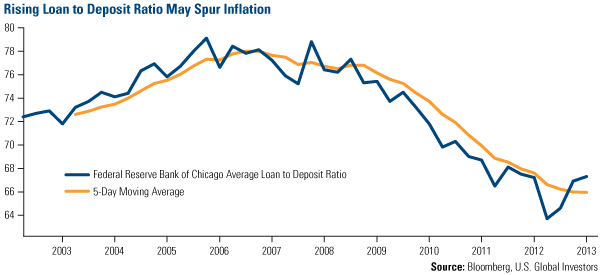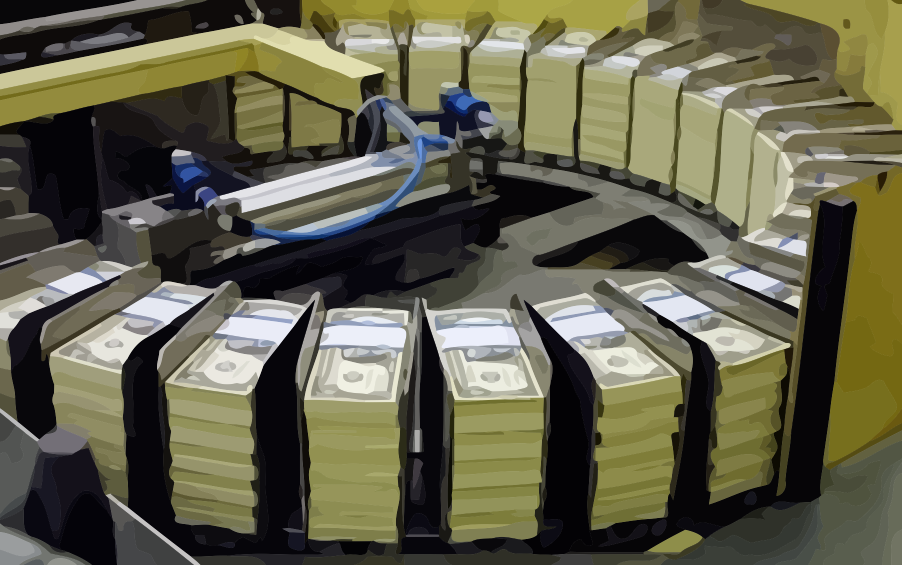Gold Market Radar (March 31, 2014)
For the week, spot gold closed at $1,295.27, down $39.43 per ounce, or 2.95 percent. Gold stocks, as measured by the NYSE Arca Gold Miners Index, declined 5.23 percent. The U.S. Trade-Weighted Dollar Index rose 0.09 percent for the week.
Strengths
- China’s gold imports from Hong Kong rose in February amid increasing demand resulting from the country allowing more banks to import the yellow metal. Net imports for February totaled 109.2 metric tons, which added to the 83.6 tons in January, account for a 140 percent rise relative to the same period in 2013. Similarly, demand in Indonesia, Thailand and Vietnam totaled 300 tons in 2013, a 42 percent increase from 2012. Lastly, the Iraqi Central Bank purchased 36 tons of gold to prop up its reserves, marking the single largest purchase in three years.
- The Singapore exchange is looking to start a gold trading market that allows for physical delivery into the island nation. The news coincides with reports of gold ETF holdings rising; the SPDR Gold Trust announced an increase in holdings to the highest in three months. With gold prices back near the $1,300 level, an important threshold for price sensitive buyers, there is encouragement for sidelined physical buyers in emerging markets to resume buying.
- Osisko Mining reported additional drilling results from its Canadian Kirkland project at Kirkland Lake including a 105 meter intercept averaging 1.41 grams per tonne. Another recent drill report included a 128 meter intercept averaging 2.26 grams per tonne. On a different note, Dundee Precious Metals announced its Tsumeb copper smelter in Namibia will ramp up to full capacity next month after receiving government approvals.
Weaknesses
- Gold traders are bearish as they expect the Fed to keep cutting its stimulus and raising interest rates as the economy strengthens. According to a Bloomberg poll, nine traders expect gold to trade higher next week, while 15 have said they expect gold to trade lower. The reason most frequently cited in the poll related to Fed Chair Yanet Jellen’s comments last week which suggested rates would rise in the U.S six months after the end of the bond buying program this fall.
- Platinum and palladium fell as striking miners in South Africa eased their pay demands. Despite this advance, a resolution to the work stoppage is not yet in sight as miners continue to demand onerous raises of nearly 100 percent over a four year period. It is estimated workers have forgone more than $403 million in wages since the beginning of the strike action.
- Standard & Poor’s downgraded Chicago-based Coeur Mining and Australia’s Santa Barbara. The rating agency argued Coeur’s higher debt load together with lower precious metal prices earned the company its new B rating. In terms of Santa Barbara, higher production costs, together with lower production volume, and execution risks in the cost saving initiatives have led to a deterioration of credit metrics. In similar fashion, Moody’s downgraded Hecla Mines arguing substantial near- term capital spending plans.
Opportunities
- During a presentation in San Antonio this week, Jefferies Chief Strategist David Zervos commented on gold and the equity market’s reaction to Yellen’s press conference last week. In his opinion, the Fed’s focus on driving real interest rates negative will continue, simply because high real rates deter investments. Just ask Japan which lost two decades while experimenting with high real rates. The Fed will likely raise nominal interest rates, but only when existing inflation can justify them; thus keeping real interest rates flat or negative. Yellen may have brought up the subject at this time because the Fed can see inflation in the horizon. Loan growth, as shown on the loan to deposit ratio below, drives money velocity. Velocity is one of the key components of inflation and was on a downtrend since 2008. This spike in velocity will act as a detonator to the unprecedented $4 trillion monetary base, thus spurring rising inflation.
- If the threat of imminent inflation hasn’t hit home for you, David Rosenberg, Chief Economist at Gluskin Sheff, brings a cascade of money supply indicators that will have you thinking. According to Rosenberg, since the beginning of the year, M1 money supply has exploded at a 23 percent annual rate, 45 percent over the past four weeks. M2 has risen at 7.3 percent pace, while the M1 multiplier bottomed a month ago, boding well for velocity to pick up. In terms of loan growth, which has accounted for velocity missing in action since 2008, commercial paper and industrial exploded 19 percent. These are crazy numbers according to Rosenberg. The quantity theory of money says that based on the statistics above, inflation may not yet be present, but it is in your future.
- Indian gold imports will rebound in the second half of 2014 as a new government eases trade curbs and festivals and weddings spur demand, according to billionaire Indian jeweler T.S. Kalyanaram. Despite the curbs, India accounted for 25 percent of global demand in 2013 according to the World Gold Council, being surpassed by China as the largest gold consumer. According to Kalyanaram, India’s demand is nearly 50 percent greater than China’s, once you take into consideration the gold smuggling.
Threats
- Kinross Gold, the largest foreign gold miner operating in Russia today has asked Canada to take a balanced approach as it attempts to resolve the standoff with Russia following the annexation of Crimea. The news hit the wires after U.S. President Barack Obama said metal producers and miners in Russia could face sanctions.
- Hedge funds may hesitate from buying more gold after boosting their bets on the metal ahead of the Fed meeting that speculated rates may rise in 2015. A Bloomberg report shows that speculators and other money managers increased their net-long position to the highest level since 2012 ahead of the Fed meeting on March 19.
- ABN AMRO, the largest Dutch bank by assets, raised its 2014 gold forecast to $1,100 from $1,000 arguing changes in in currency forecasts and current market dynamics. The bank, however, left its 2015 forecast for gold at $800 as it believes the U.S. economy will accelerate and yields climb. This is the same bank that issued paper IOUs to investors holding physical gold in its vaults, claiming it was unable to deliver physical gold to clients any longer.
















